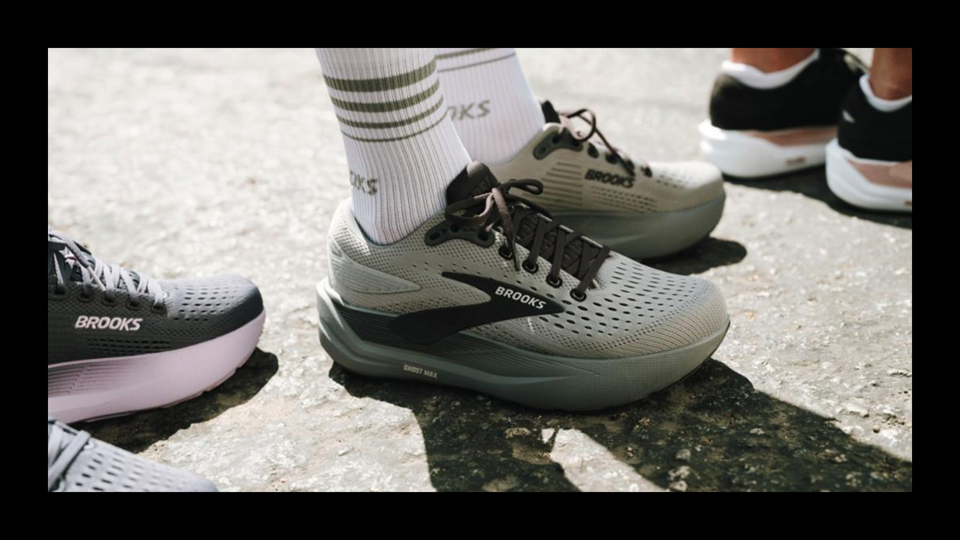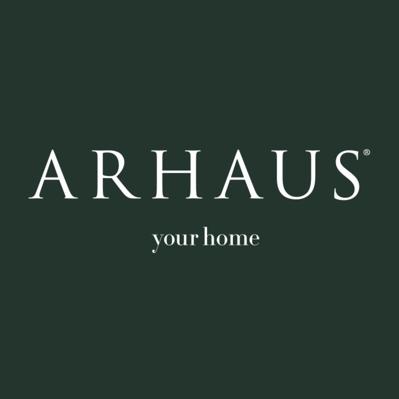Best Shoes For Standing All Day 2025 - Forbes Vetted
Our Gear Editor’s Top Picks: The Best Shoes For Standing All Day
Gear Editor.
In my role as Forbes Vetted gear editor, I spend countless hours on my feet each day, testing footwear, training for big adventures and exploring local trails. Drawing on my background working 12-hour emergency room shifts and input from colleagues, I’ve put together this complete guide to the best shoes for standing all day that balance comfort with proper support. My top pick, the Hoka Clifton 10, is a trainer that sports loads of cushioning for unrivaled relief, and if you prefer a slip-on that’s easy to take on and off, the On Cloud 6 is another great choice.
When rounding up recommendations for this guide, I spoke with a physical therapist and multiple foot doctors for further insight on what to look for: “Generally, we consider arch height, heel drop, heel stack, material and width,” says Dr. Chloe Costigan, PT, of Mobility-Doc. Ahead, eight of the best shoes for standing all day, and how to find one that actually meets your needs.
I’ve been wearing iterations of the Clifton for years, and while it used to be my go-to running shoe, I now wear it just about everywhere because I know it’ll keep my feet happy no matter how long I’m standing. As one of Hoka’s best-selling models, it offers next-level cushioning and an improved jacquard knit upper to make the design breathable and durable for daily use. It’s also fitted with Hoka’s MetaRocker technology, which minimizes foot fatigue by helping make the transition from your heel to your toe a little easier as you walk. Together, these features made the Clifton 10 easy to wear for hours on end as I was testing it around town.
All that said, the shoe does stack up pretty high, which might feel wobbly if you’re not used to it. If that sounds like a dealbreaker, the Hoka Bondi 9 could be a better fit. It’s just as cushy but offers a bit more stability. For further insights, see my Hoka Clifton 10 review after testing it for months as a walking and running shoe.
The On Cloud 6 is a great slip-on shoe for anyone who needs comfort, convenience and all-day support without the hassle of tying laces. Thanks to its speed-lacing system, you can slip it on and off with zero fuss, which can be a game-changer for those who are busy or struggle with dexterity. It also has a cushioned, lightweight midsole and soft, breathable upper to keep your feet comfortable and cool.
Forbes Vetted gear updates writer, Alexandra Garrett, has worn the Cloud 6 to the gym, on walks and while running errands, and she was immediately impressed with how easy it was to slide on and off. “When I’m looking to leave the house fast, the On Cloud 6 sneakers take seconds to slip on and go,” she says. “While they don’t have as much padding as my Hoka Cliftons, they still keep me comfortable throughout the day.”
However, if you’re someone who needs a lot of arch support or stability for intense physical activity, the Cloud 6 might not be the best fit. Its cushioning is more geared toward light support, so if you’re looking for added structure, you might want to look elsewhere, or consider adding custom insoles.
The Hoka Bondi 9 is the thicker, more cushioned cousin to the Clifton 10. It’s fitted with a tall foam sole for additional cushioning, a rear crash pad to absorb impact and more stability with each step. “The thick cushioning makes these sneakers especially supportive for long walks and travel days spent on your feet,” says Forbes Vetted deals editor Kara Cuzzone in her Hoka Bondi 9 review. “I occasionally deal with foot pain on days when I log 10,000-plus steps, but that didn’t happen to me once while I was wearing these shoes.”
These shoes also hold the American Podiatric Medical Association (APMA) Seal of Acceptance, meaning they’ve been reviewed by podiatrists to make sure they’re beneficial for foot health. Dr. Arti Kamur, a podiatrist with Healthy U Clinics, praises this shoe “for its cloud-like cushioning and rocker sole that keeps your stride smooth and light.” Similarly, Dr. Mike Daniels of WeTreatFeet podiatry notes that “the cushioning is thick, but that rocker sole really does reduce strain if you’re walking miles during a shift.”
That said, it’s heavier than the Clifton 10 at 21 ounces (men’s) compared to Clifton’s 19.2 ounces (men’s). If you prefer a more lightweight option, the Clifton 10 is a better option.
Standing on your feet for hours is tough enough, but doing so on hard surfaces like concrete takes the discomfort to another level. That’s where the Brooks Ghost Max 3 comes in. This ultra-cushioned shoe features nitrogen-infused DNA Loft v3 foam, delivering an incredibly plush ride, while its rocker sole helps smooth out heel-to-toe transitions and reduces fatigue—though the difference might be so subtle you barely notice.
I’ve spent months testing this shoe while walking and running, and I’ve worn it for hours at my standing desk to gauge its support in between movement. All in all, I’ve found that it’s a soft, pillowy shoe that feels even more like walking on a marshmallow than the Hoka Bondi or Clifton, which translates to long-term comfort on hard surfaces like concrete. Technically, you can also run in it, but I think it’s more reliable at slower paces, like standing, walking and light jogging.
Ultimately, Brooks didn’t change a lot when they updated this plush trainer, but that’s the point. It takes on the qualities that I truly loved in its predecessors and adds just a touch of padding to improve comfort. Read my full review of the Brooks Ghost Max 3 to learn more about its minor improvements, and why it’s such a solid shoe.
How We Chose the Best Shoes for Standing All Day
To pack this guide with comfortable, capable footwear, I relied on my in-depth footwear expertise to identify and recommend options known for quality, comfort and durability.
- I started by researching reader-favorite styles and narrowed down my picks with insights from podiatry experts.
- Because standing for hours demands supportive, stabilizing footwear, I prioritized features like cushioning, weight, breathability and overall comfort. Based on insights from Dr. Costigan, I also took arch height, heel stack, heel drop, material and width into account.
- I also considered different environments that require you to stand all day, which is why I’ve included everything from traditional running shoes to clogs.
- Finally, I weighed my findings and recommendations against online customer reviews and opinions from Forbes Vetted staffers, evaluating real-world feedback to ensure these shoes perform as promised. Many of these styles have since been tested by Forbes Vetted staffers, including the Hoka Clifton 10, On Cloud 6, Hoka Bondi 9, Brooks Ghost Max 3 and New Balance Fresh Foam X 880x15.
How To Shop For The Best Shoes For Standing All Day
When the time comes to invest in a pair of shoes for standing all day, key factors include fit, support, durability and materials. Here’s what to keep in mind:
Fit
Getting the right fit is key when you’re shopping for shoes to support your body for hours at a time. Shoes that are too loose can cause rubbing and blisters, while ones that are too tight can leave your feet feeling cramped and sore. “Make sure there’s room in the toe box,” explains Dr. Daniels. “Your feet swell during the day, and you don’t want shoes that feel tight during working hours.”
Ultimately, you want a snug fit in the heel to keep your foot secure and enough room in the toe box for your toes to move naturally. And as Costigan notes, it’s worth investing in a quality pair of shoes, even if they’re a bit more expensive. “Your body will thank you,” he says.
Cushioning
For all-day standing, midsole cushioning is essential because it directly impacts long-term comfort. Materials like EVA, TPU and PEBA offer shock absorption and other benefits, such as durability and energy return. But don’t assume more cushioning is always better—it also comes down to how firm or soft the cushioning is. “The material can impact how much the force is absorbed,” explains Costigan. “Some people like a more firm shoe for standing. Other people like something more soft.”
Arch Support
“It’s imperative to have a shoe that accommodates to your arch height,” says Costigan. “Remember this isn’t just about your foot. If your arch is collapsed, then you’re going to have more force on the inside of your knee that will cause your hips and spine to compensate.” If you have flat feet, look for a stability shoe that keeps your feet in a neutral position. If you have high arches, look for a shoe that supports the arch of your foot. And if you use orthotics, look for shoes with removable liners and try them on with your orthotics to ensure a good fit.
Durability
It may seem obvious, but shoes designed to provide comfort and support for hours at a time need to be durable. If they’re lacking in this aspect, you risk not only the uppers tearing or the liners falling apart, but the soles giving out as well, which can spell trouble for your feet, legs and back. To ensure your shoes are durable, buy from reputable brands with solid track records like Hoka, On and Dansko, and factor in warranties that give you flexibility to return or repair shoes if yours fail.
Breathability
Your feet are going to sweat if you’re standing all day—there are no two ways about it. Normally, sweaty feet aren’t cause for concern, but if your feet are especially sweaty, be sure to invest in shoes that feature soft, breathable fabrics for improved comfort. “Nobody wants sweaty feet,” says Dr. Daniels. “Mesh uppers help keep things dry and cuts down on blisters.”
Foot Conditions
Various foot conditions, like plantar fasciitis or flat feet, can influence the type of shoe you find most comfortable. For example, people with plantar fasciitis need more arch support and thicker cushioning than others. Shoes that cup the heel, such as the Kuru Atom 2 can also help curb discomfort.
If you’re wearing a pair of shoes and simply don’t know if they’re good for standing all day, start by listening to your body. As Costigan explains, pain can indicate that your footwear isn’t up for the task, but it’s not just your feet that have to hurt. Pain in your knees or lower back can also be signs that you’re standing in improper shoes, so be sure to listen to your entire body.
Why Trust Forbes Vetted
Our team of editors and writers bring decades of experience with footwear to our reporting, giving us the expertise to guide you toward the right shoes for your needs. Over the years, we’ve covered everything from the best Hoka running shoes to the best shoes for plantar fasciitis and even the best Hoka shoes for nurses.
- Author and Forbes Vetted gear editor Cam Vigliotta holds a degree in kinesiology from the University of Massachusetts. While attending school, he worked in an emergency room for two years and spent hours on his feet during several 12-hour shifts per week. Vigliotta has tested and reviewed a wide variety of footwear over the years.
- To better understand what makes a shoe ideal for standing all day, we consulted Dr. Chloe Costigan at Mobility-Doc, PT, of Bethlehem, Pennsylvania, to learn more about fit, cushioning, support and durability. We also spoke with Dr. Arti Karmur of Healthy U Clinics; Dr. Adam Shapiro of Foot & Ankle Associates; and Dr. Mikel Daniels of We Treat Feet Podiatry.
- Our team regularly revisits this guide to reevaluate our recommendations against the latest releases and provide the most current advice. It was last updated by Vigliotta in October 2025, who reviewed each of these selections and updated one of our picks—the best shoes for standing on concrete all day—to the Brooks Ghost Max 3.











